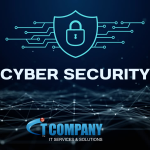Cybercriminals are targeting your credentials; here’s how to keep them at bay.
Phishing assaults are on the rise, and they are becoming increasingly expensive for enterprises. According to PhishLabs, assaults increased by 28% in 2021 compared to the previous year. Phishing emails are being used to launch a substantial number of cyberattacks.
As a result, organizations should prioritize the prevention of fraudulent emails. However, many organizations are still unaware of the extent and scale of the phishing problem, the associated consequences, or even what is phishing.
So, what is phishing?
Phishing is an effort to gain information or money via the use of a misleading email. Phishing emails imitate the appearance and feel of authentic email communication from a trusted source, such as a person or, more commonly, a firm such as Amazon, Google, or PayPal. These emails create a feeling of urgency for users to follow a link to a website where they will input their passwords in order to avoid an unfavorable occurrence, such as their email account being shut down or a fraudulent payment is completed, or to double-check an account balance.
After users log in, their information gets stolen, or their system gets infected with malware or ransomware. Cybercriminals can exploit the data to get into accounts, steal money, or make false transactions in some situations. Here are some of the commonly used phishing methods:
- Link manipulation is used in phishing schemes, which use misspelled URLs that seem similar to authentic ones. To avoid detection, hackers frequently incorporate graphics in emails rather than text. More advanced methods may include a covert redirect that employs a login prompt on a real website.
- Spear phishing is an attack that targets a single person or organization. These assaults often include obtaining information about the target or targets ahead of time in order to better design phishing emails that may be used to deceive potential victims.
- Clone phishing utilizes a valid and previously delivered email with a cloned attachment or link.
- Whaling attacks are intended at top executives or other high-profile targets and replace the link/attachment with a malicious site or harmful attachment. These frauds are typically disguised as essential business or legal emails and have even contained fake subpoenas.
- SMS phishing, often known as smishing, is the use of cell phone text messages to get personal information from receivers.
Simple Security Strategies
Email filters and other security solutions can prevent phishing emails from reaching your customers’ inboxes. However, the crooks behind these scams are continuously evolving their methods to escape detection. Phishing is mainly reliant upon psychological manipulation, with end-users being the weakest link.
Even simple, low-tech tactics can assist you in protecting your organization and consumers from the expenses and effects of a phishing attack. These are some examples:
Training
Provide training to assist employees to spot phishing red flags such as misspelled website names, strangely titled attachments, and so on. Furthermore, staff should “hover” over sender names in emails and embedded links to ensure they correspond to the original account or a reputable website.
Make sure they are also aware of best practices, such as never signing into a website reached via an email link.
Email Addresses Reserved
If the company gets valid emails for financial transactions on a regular basis, it might create separate email accounts for those requests. Limit the visibility of these addresses on public sites, which can help decrease their phishing target footprint.
Codenames and Code Words
Not only are code names used by spies. Employees or clients, for example, may develop special email formats or code phrases for correspondence to alert the receiver that the email was real.
Implement Email Policies
Create policies to reduce the number of sensitive transactions that take place via email. Employees who are aware that financial authorizations should only be issued in person or over the phone are unlikely to fall for a phishing effort to get them over email.
Because phishing is a growing and ever-changing hazard, it is critical to remain up to date on the latest threats and the actions your company can take to counteract these attacks.





